Magazine
The Garden That Grows with Us

As told by the community of Central Park’s Conservatory Garden.
At the northern edge of Central Park, where Fifth Avenue meets 105th Street, a set of wrought iron gates opens into something altogether unexpected: a formal Garden in East Harlem, open to the public, impeccably cared for, and improbably serene. Step inside, and the clamor of New York City recedes into birdsong, fragrant blossoms, and manicured lawns. Here, time isn’t measured by the hour, but by the blooms.
After three years of dedicated work by the Central Park Conservancy, the Conservatory Garden has been lovingly restored. At six acres, it remains one of the most intimate spaces in Central Park—and one of its most intricate. As time passed, the Garden’s aging structure began to show signs of wear, prompting a comprehensive reconstruction of its pavements, site furnishings, fountains, infrastructure systems, the pergola, and the crabapple allées. Completed in spring 2025, the restoration focused on structural renewal and long-term vitality across all three of the distinct gardens.
But this recent restoration was never just about improved paths or replanted trees. It is a reaffirmation of the essential value of public space—providing a space that listens, heals, and endures in a City that never stops. It is about the people who move through the Garden—their memories, their rituals, and their quiet need for something beautiful, healing, and unchanging. More than a restoration of landscape, it is a restoration of resilience. And of reverence.
The Garden That Sparked a Passion
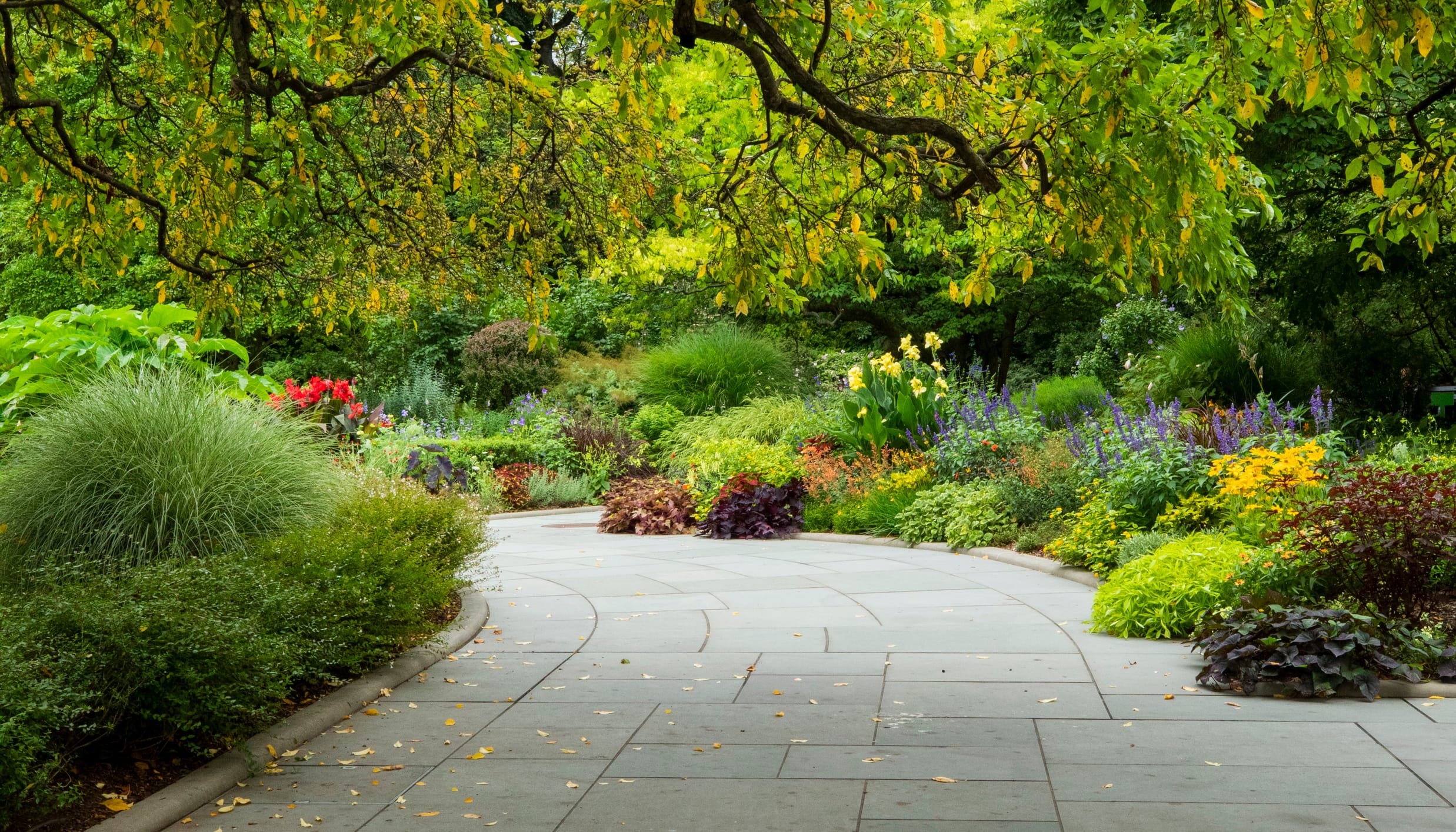
Dr. Daniel Fierer, an Infectious Disease Specialist at Mount Sinai, has walked through the Conservatory Garden nearly every day for the past 25 years. What began as a practical route to work gradually became something deeper.
“I walk through the Garden every day. And I don’t feel it as routine—it’s special every time,” Daniel says. His commute—under magnolia blossoms in April, past peonies in May, through lilacs in June—became a form of ritual.
Shortly after moving to the neighborhood, he stumbled upon the Garden and was stunned. “I saw this place and I realized immediately—it’s extraordinary. How could I not support it? The first thing I did—besides signing up for public radio—was become a Conservancy member.”
Over the years, he’s come to learn the Garden's rhythms like an old friend: where the late-blooming crabapples linger in shade, which peony beds are fullest (his wife’s favorite flower), and the exact spots where the fragrance is strongest.

A community of care
“That’s the kind of connection that makes the Garden feel like home. It’s not just about walking through something beautiful—it’s about being part of a community that cares for it.”
But it’s not just the flowers and trees that draw him in. Daniel has also built long-standing relationships with the Conservancy gardeners and staff who care for the space. “The amazing thing is, I feel like only truly passionate Conservancy or Park people know the love and care that goes into it,” he says. “Because I think it’s largely invisible. You see a bunch of gardeners running around, pulling weeds. But if you happen to come through one day and see all the pots and tools set out, then you get it—you get insight into all that they do.”
So when sections of the Garden closed for restoration, he didn’t stop walking. He simply walked beside it—around fences, down Fifth Avenue—refusing to break the ritual. “The disruption made it all the more clear how special this place is,” he says. “Even when I couldn’t walk through it, I still walked beside it. I needed to be near.”
The Garden That Inspires the Artist
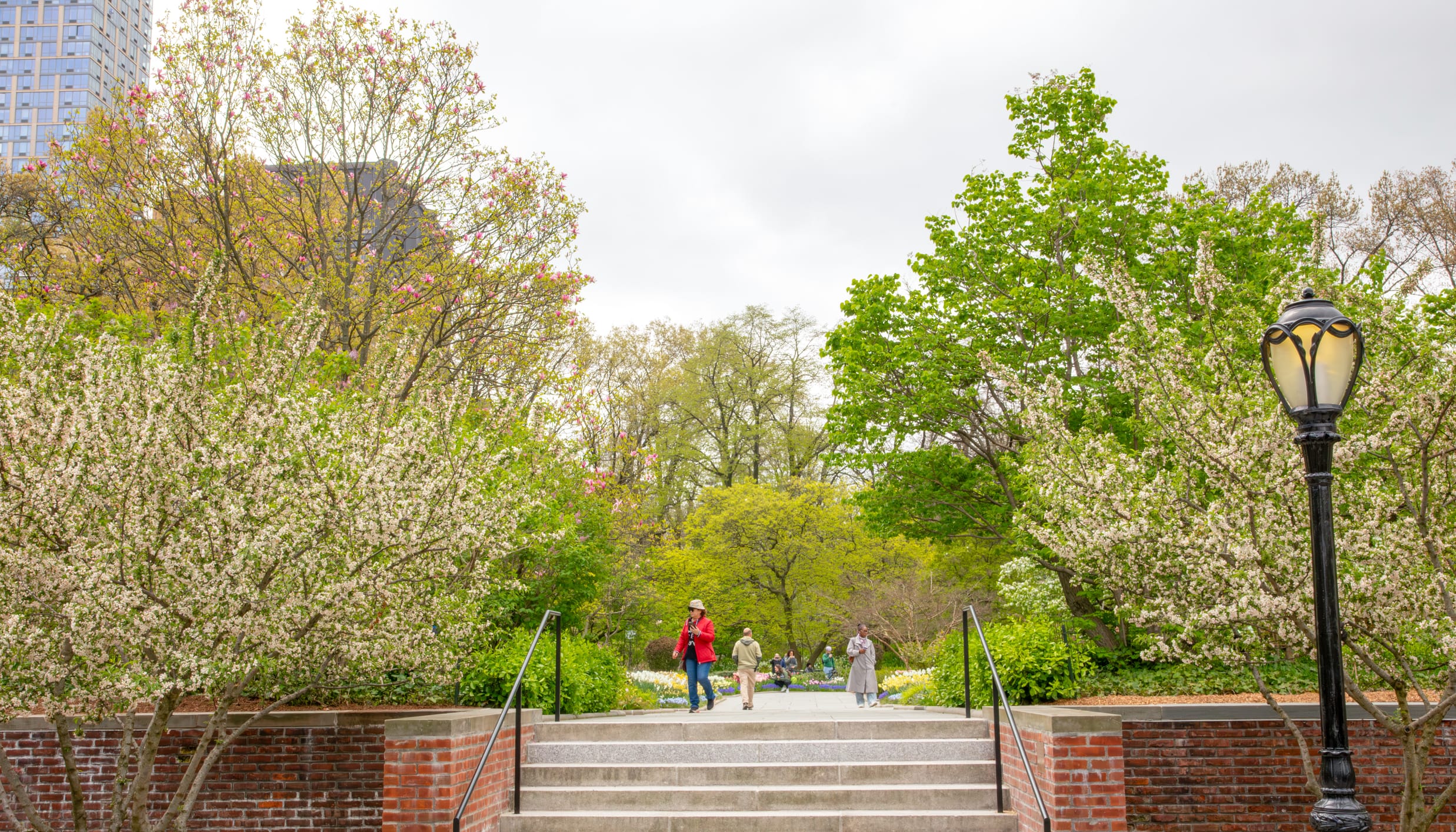
Artist Dasha Shkurpela often begins her mornings in the Conservatory Garden—sometimes sketching, sometimes meditating, sometimes simply sitting still and absorbing. “Nature is the best artist,” she says. “The forms, the textures, the diversity—it’s endlessly inventive. You can see scenes and subjects changing in the light.”
That fascination with change—and the quiet wonder it invites—finds its way into her work. Over the course of three years, Dasha created a series of more than 120 plant studies, each drawn in different states of bloom and transformation. “When I draw magnolias, I can really feel the change—from the first bloom to the moment the petals fall. You witness time differently. And I love that.”

A space of revelation
In Dasha's series of illustrated books, a rescue pit bull named Sallie discovers her unusual gift—the ability to smell emotions—during a walk through the Garden. “It’s where her purpose becomes clear,” Dasha says. “She learns to name the emotions and how to transform them—sadness into joy, fear into courage.” The story is ultimately about home—not only in the literal sense, but in the deeper sense of belonging to a place that invites growth.
But the Garden’s significance runs deeper than story and sketches. For Dasha, it’s a personal landscape of memory and emotion. “My father has a garden back in Kyrgyzstan,” she recalls. “And sometimes, when I sit here, it takes me back to that carefree space of being a child. It’s that same feeling—everything is on hold, everything is okay. And that’s just so lovely.”
So when the aging crabapple trees were removed during the restoration, the loss felt personal. “I drew them before they were taken out,” she says. “I was sad, of course. But watching the new trees arrive—seeing them planted, catching the first blooms, knowing I’ll witness them grow, and wondering where I’ll be when they’re in full bloom—that was something, too. It’s a privilege to witness that kind of care and change. Like what can be, what will be.”
The Gardener Who Found His Stage
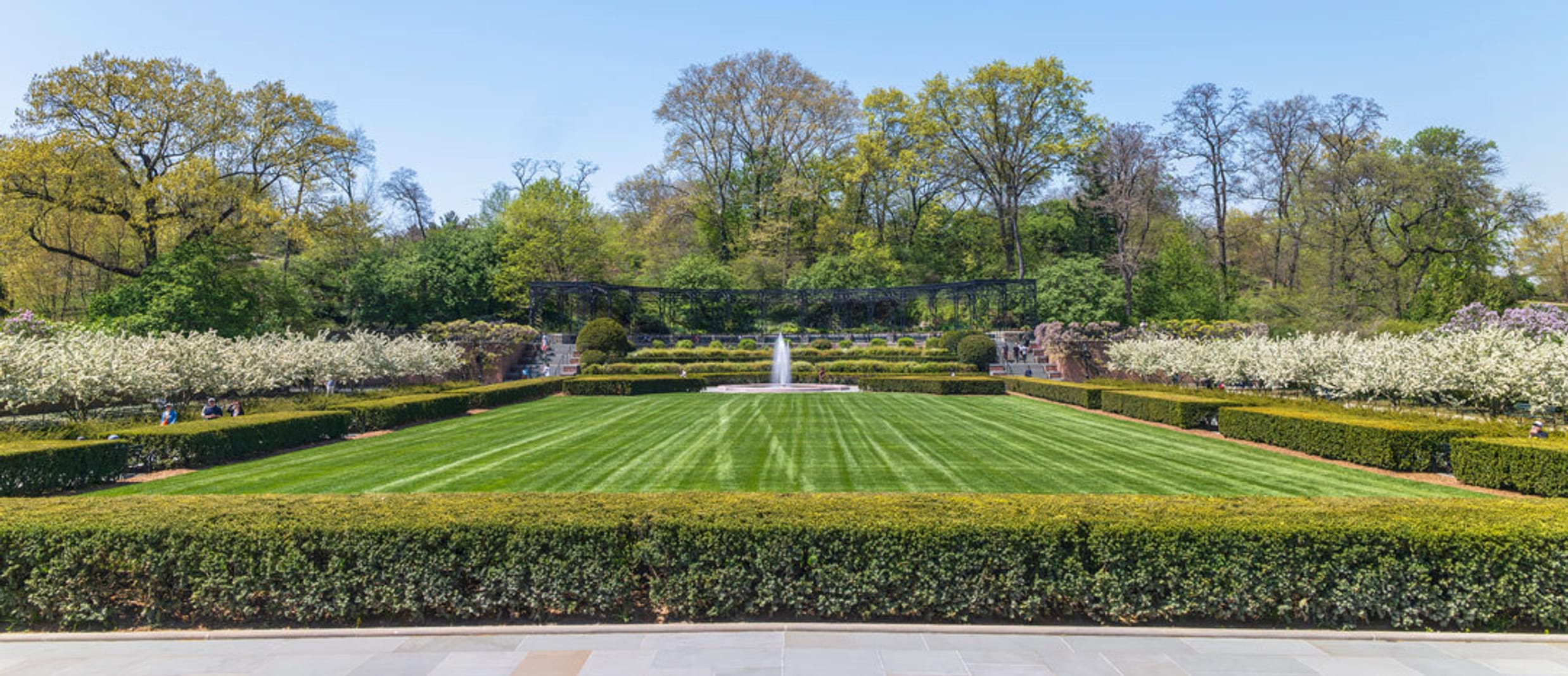
Joe Gamache, the Conservancy’s Assistant Curator of Gardens, began as a volunteer in 2008. At the time, he was waiting tables in New York City and pursuing a career in the performing arts. One afternoon, he spotted a group of volunteers tending the flower beds in the Conservatory Garden. Curious, he asked how to get involved. A few days later, his hands were in the soil.
“I never thought I’d have a career in horticulture,” he says now. “This place changed my life.”
But for those who know him, the transition felt natural. Joe had been gardening since childhood—starting with a small plot at his grandparents when he was eight. His knowledge of plants is vast, but what makes him extraordinary is his desire to share that knowledge. Whether it’s a group of school children, a nurse from Mount Sinai, or an older couple enjoying the afternoon sun, Joe finds a way to connect. “I’ll tell them, ‘Go smell that rose over there—that one’s the winner.’ And you can see their face light up.”
Over the years, Joe became part of the Garden itself. He speaks with deep affection for its regulars: toddlers clutching rope lines, elderly neighbors resting on shaded benches, cancer patients visiting for a moment of peace. “This place has saved people,” he says. “During the pandemic, I heard it again and again—‘The Garden saved me.’”
It’s that same care that made him a crucial presence during the Conservatory Garden’s restoration. Every day, Joe was there—tending to the grounds, supporting the crews, and answering questions from worried regulars. “People were heartbroken when the wisteria came down,” he recalls. “But they understood when they heard why. The structure needed saving. And the wisteria will bloom again. You just have to understand where their concern is coming from.”
To Joe, the restoration wasn’t just about preservation—it was about deepening the Garden's promise through expanding access. He mentions spots where steps once stood, now with accessible slopes. “Nothing about the footprint has changed,” he says. “It’s still the Garden you know. It’s just ... more welcoming for all.”

The Care Our City Deserves
"It’s not just about our stewardship. It’s about what our stewardship means. It means the people who come here—they’re important enough. The future generations—they’re important enough. They deserve this. And we’re here to make sure that they have it.”
And for Joe, that spirit of welcome is what it’s all about. “We’re in East Harlem,” he says. “To have a Garden this formal, this cared-for, and this free to everyone—that’s not just horticulture. That’s community.”
He hopes the Garden continues to serve generations to come—not just as a beautiful place, but as a statement of worth. “I think people come in and expect to be impressed by the upkeep—the hedges, the plantings, the perfection. And sure, we do our best,” he says. “But what matters most is the message we send by doing that work.”
The Garden That Heals
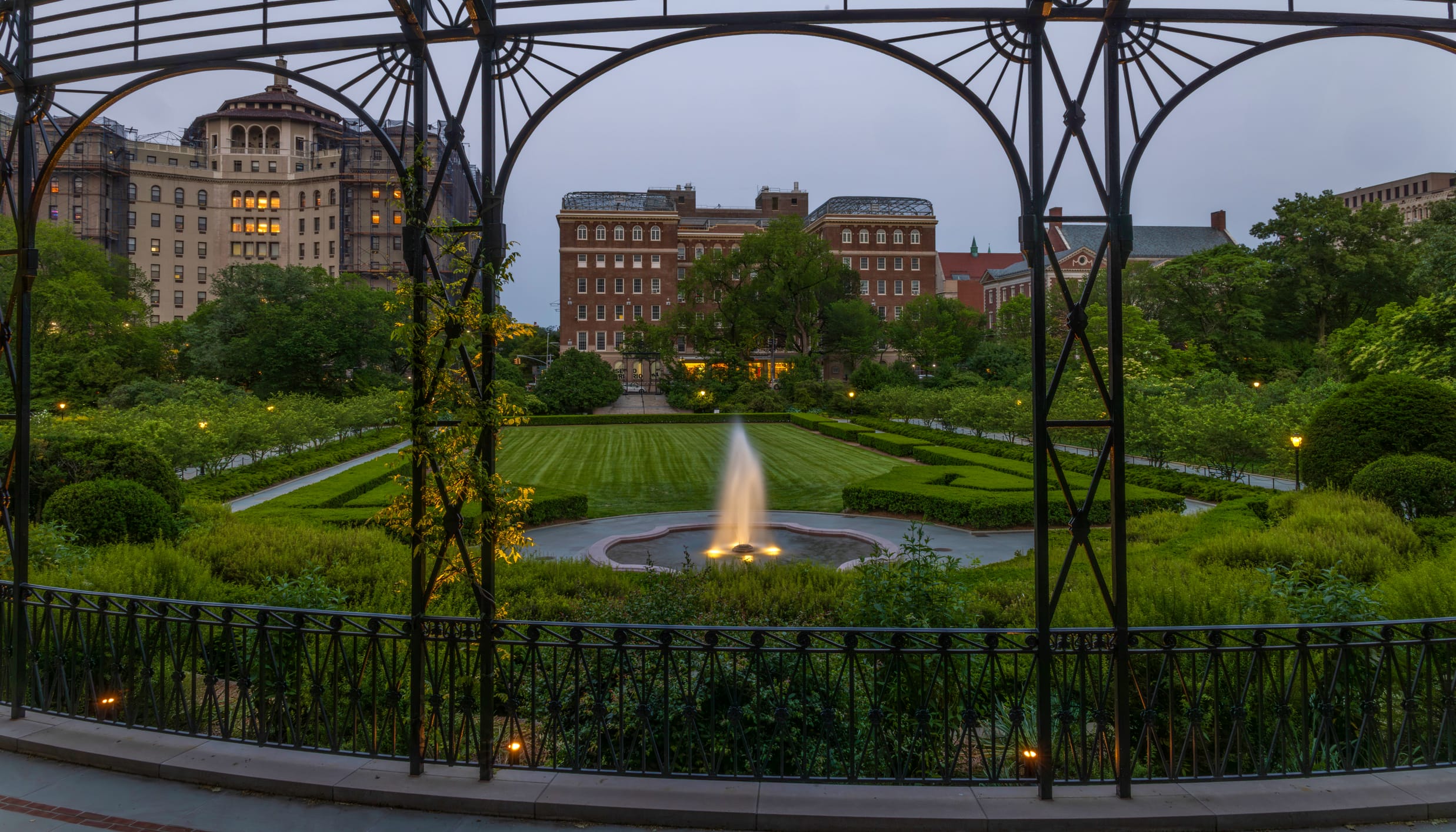
For Claire Vecchione the Garden was a lifeline during some of the most stressful moments of her profession. Her connection to the Conservatory Garden was born during a time when she needed peace the most.
“I remember how beautiful the landscaping was, and how at peace I felt sitting under the pergola watching the fountain while I ate my lunch,” she recalled. “I remember feeling so lucky that I stumbled upon it.”
During her time at Mount Sinai, she visited as often as the weather allowed. The Garden became a routine, a reprieve, and in many ways, a companion. “At times, work was the most stressful part of my life, but I would always look forward to visiting the Garden. It was what I needed—a break from the chaos.”

A Place for Peace and Pause
“To leave a very stressful place and feel a sense of immediate calm—to hear birds, to feel the breeze, to let the mist from the fountain hit you on a windy day—that was everything. Seeing how much care goes into maintaining this place for people to enjoy … I hope the gardeners and staff realize how special their work is.”
She reflects on what it meant, as a healthcare worker, to have access to such a space. “It did help me process. As a healthcare worker, you sometimes become desensitized to what’s going on inside the hospital. You have to. But stepping into the Garden helped me remember. Not to dwell, but to reconnect with why I was there in the first place. Not many healthcare workers have that opportunity. It’s really unique.”
Claire found comfort in the rhythms of the space, and now, she’s passing it on. “I brought my husband here. And I plan to bring my daughter soon.”
The Garden Worth Transforming
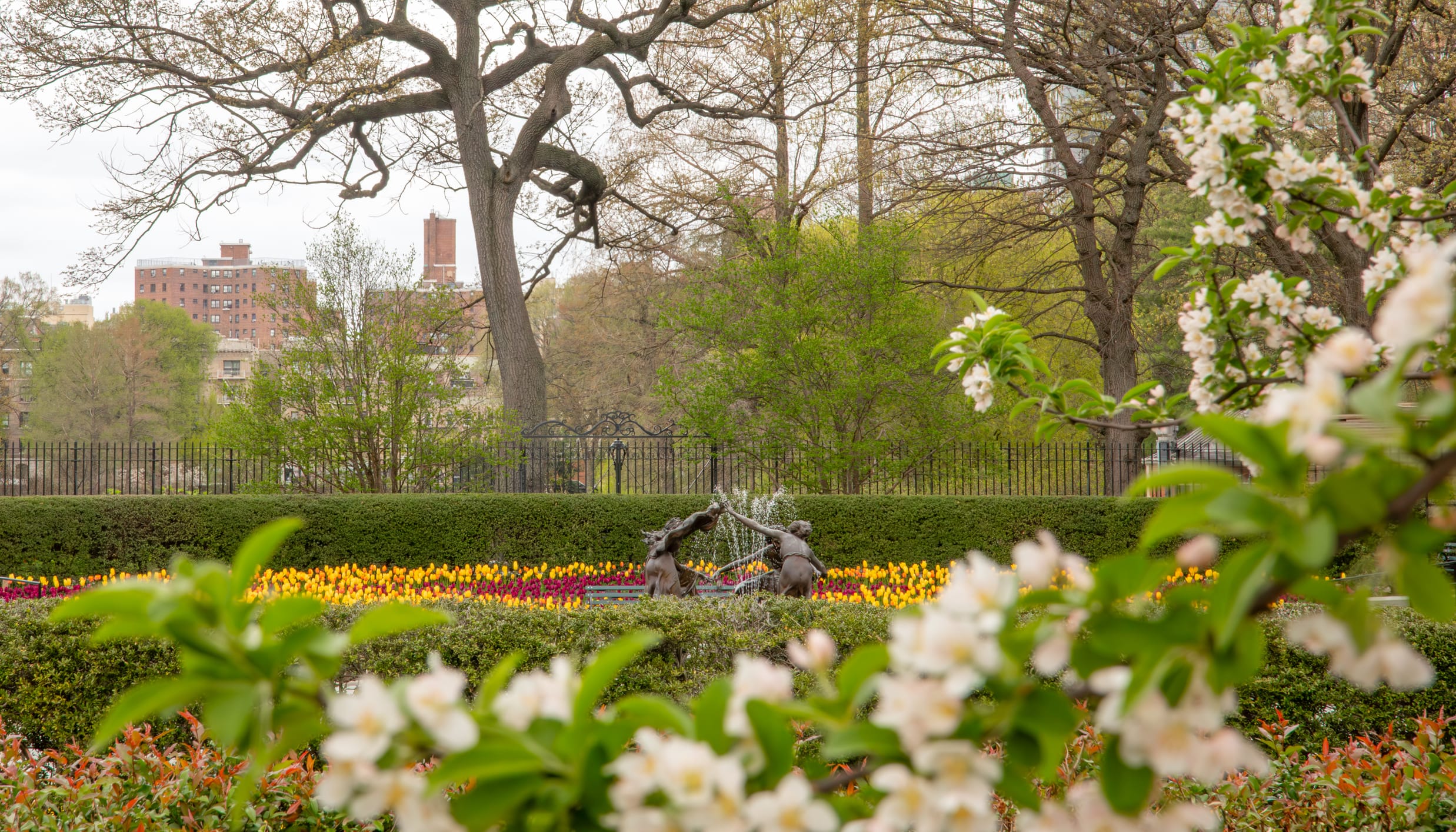
Restoration is often understood as a return. But in the case of the Conservatory Garden, it is also an act of forward motion. The new plantings, the reinforced infrastructure, the improved accessibility: all of it is about protecting not just what the Garden was, but what it can be.
Frederick Law Olmsted and Calvert Vaux envisioned Central Park as a democratic sanctuary in a growing metropolis. The Conservatory Garden, though designed decades later, carries that spirit in its own refined way.
Dr. Daniel Fierer“Central Park was designed as a democratic space. And this Garden—though more formal—keeps that promise. It’s free. It’s quiet. It reminds you to look closely. To notice. To breathe.”
And that is the heart of restoring a public space like the Conservatory Garden. Not just the infrastructure, the plantings, the pathways, but the restoration of the daily, quiet rituals: a morning walk. Lunch on a bench under wisteria. A drawing started. A peony cherished.
Central Park may belong to the City. But the Conservatory Garden belongs to us—the community who cherishes and cares for it.
Hong Vu is the Associate Director of Editorial at the Central Park Conservancy.

Explore the Garden’s Transformation
Discover the full story behind the Conservatory Garden restoration—including its history, the craftsmanship behind the work, the care guiding every decision, and the thoughtful design that ensures this beloved space continues to flourish for generations to come.



